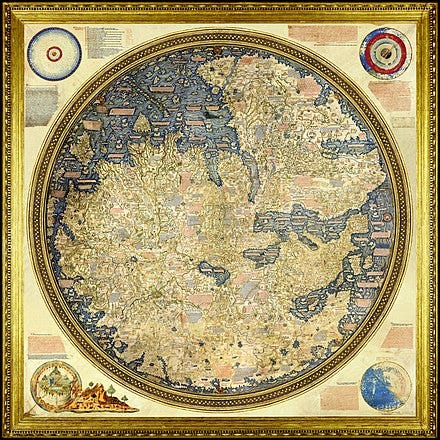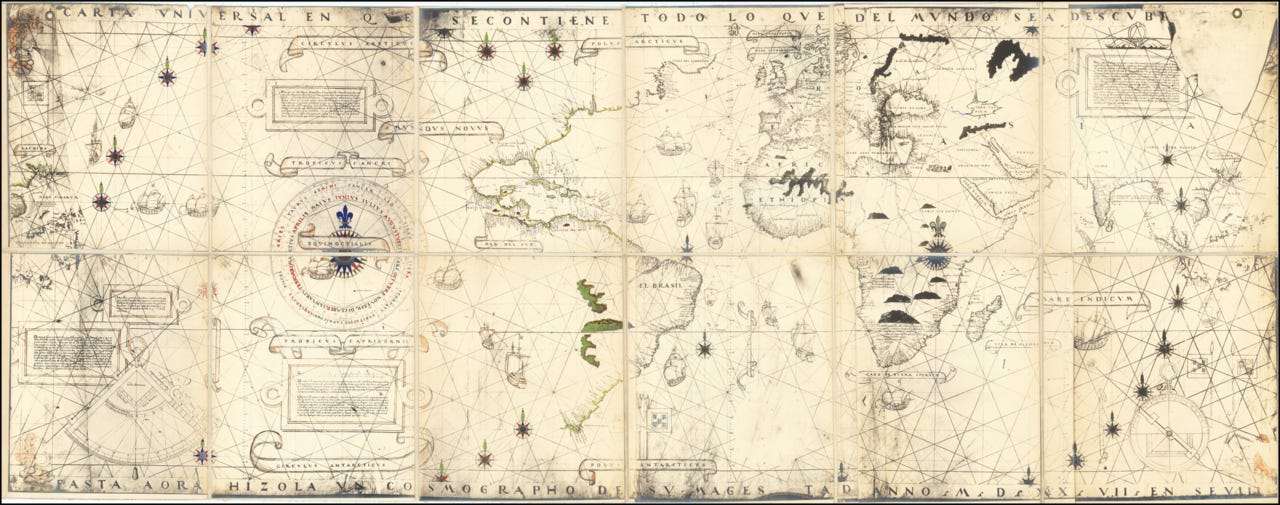
“I can’t think of any period in human history when people were really certain of what to do and had no surprises or unexpected developments which took them unprepared and frightened. What is novel is not uncertainty. What is novel is the realisation that uncertainty is here to stay. Therefore, we are challenged with a task which is unprecedented. The task is to develop an art of living permanently with uncertainty.”
Zygmunt Bauman
In my book, Undisruptable, I share how centuries ago, sailors set sail with maps adorned with the cautionary Latin phrase “hic sunt dracones”—here be dragons. These foreboding words served as a stark reminder that the uncharted lands held vast mysteries, conveying that much about these territories remained unknown. In this context, “Here be Dragons” encapsulated the cartographers’ limited understanding, paving the way for a metaphorical reflection on our current voyage into a new realm—the digital world.
Just as these historical maps required constant updates and revisions, so too must we embrace the notion of updating our mental maps as we navigate the uncharted territories of the digital realm.
Thanks for reading The Innovation Show! Subscribe for free to receive new posts and support my work.
The Fra Mauro Map: A Quest for Certainty
In “Strategy Beyond the Hockey Stick”, our forthcoming guest Sven Smit tells us that before Christopher Columbus set sail for the New World in 1492, world maps were highly detailed but remarkably inaccurate. A typical one looked like the Fra Mauro map below.

The Fra Mauro map was painstakingly crafted by Italian cartographer Fra Mauro in the 15th century. It sought to depict the known world in astonishing detail, leaving little room for discovery. The map was a testament to the prevailing mindset of that era (and arguably this one, too) —a longing for certainty.
In its meticulous nature, the Fra Mauro map inadvertently limited the possibilities for exploration. Confining knowledge to what was already known hindered the potential for new horizons. It represented a snapshot frozen in time, reflecting the prevailing beliefs and limited information available during that period.
The European part of the map, closest to Fra Mauro’s home in Venice, is the most accurate. However, the team of mapmakers also drew Africa and Asia just as confidently, despite their limited knowledge of those unexplored coastlines. Not surprisingly, they missed the Western hemisphere entirely. Consequently, when Columbus sailed west from Spain, he thought he was some 4,000 miles away from Japan when, in fact, he was 12,500 miles away—with an unknown continent in between. After Columbus hit that new continent, what we now call the West Indies, mapmakers recognised just how much they didn’t know.
The Diego Ribeiro Map: Embracing the Unknown

“There are way more unknowns than knowns in the universe. Our job as innovators is to discover the unknowns, make them known.”—Dr. Genichi Taguchi
Several decades later, the renowned Portuguese cartographer, Diego Ribeiro, created a map that took a vastly different approach. The Diego Ribeiro map embraced the unknown. This map acknowledged the existence of uncharted territories and left ample space for future exploration and discoveries. Ribeiro recognised the dynamic nature of the world. His fresh approach allowed these transformations to occur within this new cartographic paradigm.
The metaphorical significance of the Diego Ribeiro map lies in its representation of the mindset required for our journey into the digital (especially AI) realm. Just as Ribeiro acknowledged the existence of unexplored lands, we must recognize that the digital realm presents a vast landscape of unknowns. It is a realm where innovation, creativity, and unprecedented opportunities await those open to embracing uncertainty.
The Digital Realm: Embracing the Unknown

The Fra Mauro map and the Diego Ribeiro map are potent symbols of two contrasting mindsets—one driven by the need for certainty and the other by the acceptance of the unknown. As we venture into the unknown, we must remember the lessons these maps offer.
The spirit of Ribeiro’s map implies that the digital landscape constantly evolves, with vast expanses of uncharted territories. Just as the Diego Ribeiro map provided blank spaces waiting to be filled, we must be open to the serendipitous discoveries, unexpected connections, and revolutionary ideas that the digital realm can offer. By acknowledging that we do not have all the answers, we can create a mindset that encourages curiosity, adaptability, and an acceptance of failure in the pursuit of success.
To successfully navigate the new world, we must humbly accept; that we don’t know what we don’t know. Like the mapmakers of the past, we must accept that accepting ignorance had to come before embracing knowledge. In the business world, this means a departure from the world of a five-year plan (map) in favour of the uncertain harbour of a five-year direction, where an organisational North Star serves as a magnetic force. This new mental map leaves enough room for uncertainty, deviation and exploration, just like the Ribeiro map.
However, as long as the business environment punishes rather than teaches, (potential) corporate explorers will continue to remain defensive, less reflective, and less able to adapt, unlearn, relearn, and course-correct. To survive in an ocean of possibility, we need everyone energised as crew with no passengers.
I leave you with the fitting words of Sir Isaac Newton — “What we know is a drop; what we don’t know is an ocean.”
For more on a mindset of Discovery and embracing unknowns, check out our recent episode with Bob Moesta and “Prototyping to Learn”.
The winner of “Learning to Build” is Mim O’. Mim, I will drop you a line to organise delivery.
Next week, we have a copy of our upcoming guest, Bill Aulet’s: “Disciplined Entrepreneurship”, email us to be in the hat.